Major, long-duration X1.1 solar flare produces Earth-directed CME
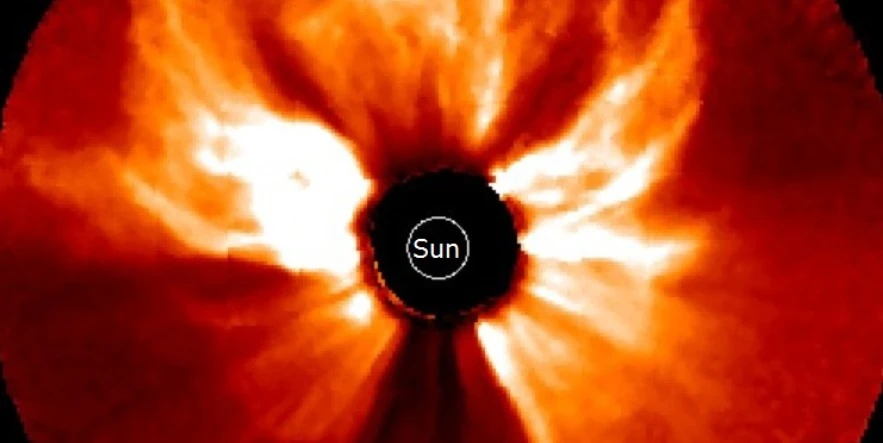
A major, long-duration solar flare measuring X1.1 erupted from Active Region 3614 at 01:33 UTC on March 23, 2024. The event started at 00:58 and ended at 02:21 UTC. A halo CME was produced, with impacts to Earth likely late March 25 or early March 26.
A Type II Radio Emission with an estimated velocity of 791 km/s was associated with the event — indicating a coronal mass ejection (CME) was produced.
In addition, a 10cm Radio Burst (tenflare) lasting 66 minutes and with a peak flux of 240 sfu was also associated with this event. A 10cm radio burst indicates that the electromagnetic burst associated with a solar flare at the 10cm wavelength was double or greater than the initial 10cm radio background. This can be indicative of significant radio noise in association with a solar flare. This noise is generally short-lived but can cause interference for sensitive receivers including radar, GPS, and satellite communications.
The event produced a full halo CME and part of it is likely Earth-directed. “This could easily give us G2, possibly G3-level impacts, sometime late March 25 or early March 26,” Dr. Tamitha Skov said. “Waiting for NASA and NOAA models to confirm,” Skov added.
Radio frequencies were forecast to be most degraded over Japan, the Philippines, Indonesia, Australia, and New Zealand at the time of the flare.
The flare was still in progress when a solar filament erupted near Region 3615, producing what might be an M-class event.
It’s worth noting that SWPC forecasters initially said it’s hard to say with certainty which region [3615 or 3614] was the source of X flare, but the flare from 3614 appears to have a likely coronal mass ejection (CME) associated with it. “We must await imagery to be sure and begin analysis accordingly.”
In the reviewed solar flare events list for the day, SWPC attributed the X-class flare to Active Region 3614 (beta).
Both regions are in geoeffective positions, suggesting any CME they produce today and over the next couple of days would be Earth-directed.
Proton flux levels started sharply rising following this activity (at 03:50 UTC) and are now approaching the S1 – Minor solar radiation storm threshold. As a result, an S1 – Minor solar radiation storm watch is in effect through 21:00 UTC today.
Furthermore, a G1 – Minor geomagnetic storm is currently in progress. Additional enhancements are likely on March 24 from the anticipated co-rotating interaction region (CIR) ahead of a negative polarity coronal hole high speed stream (CH HSS), with isolated periods of G1 – Minor storming likely on March 25.
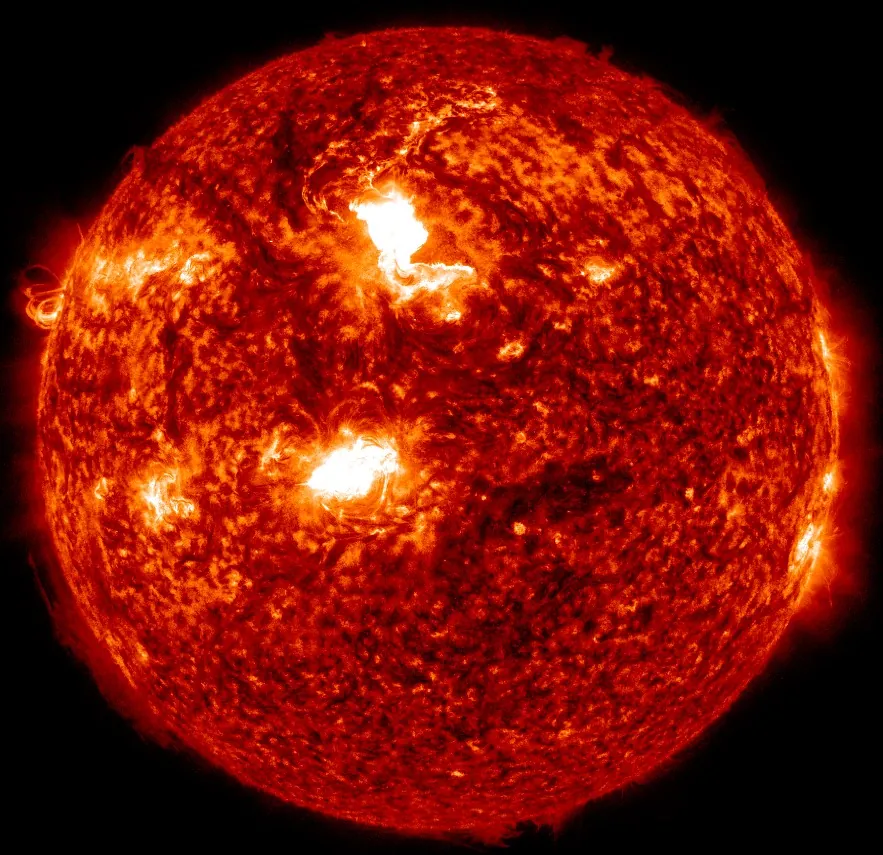

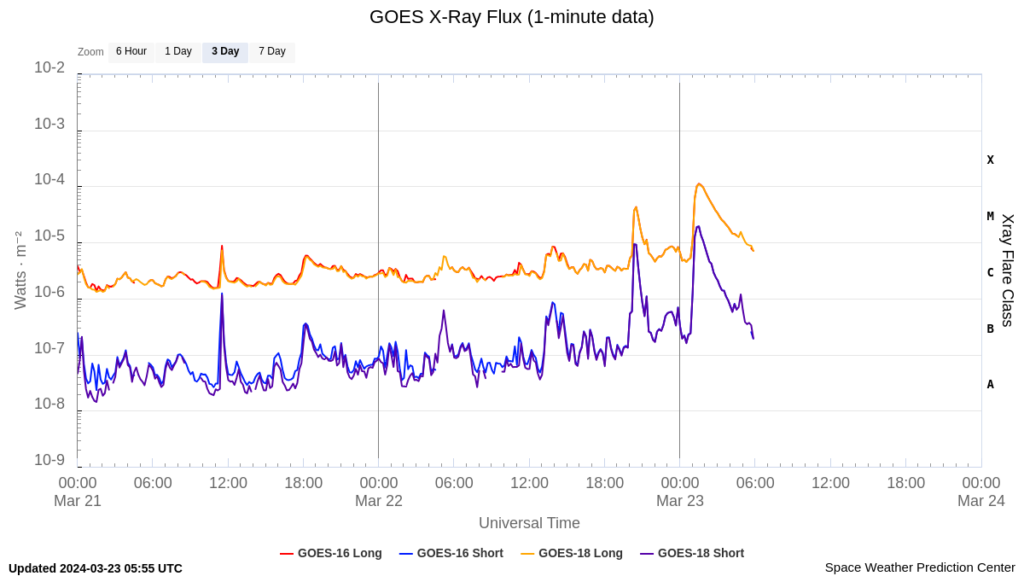

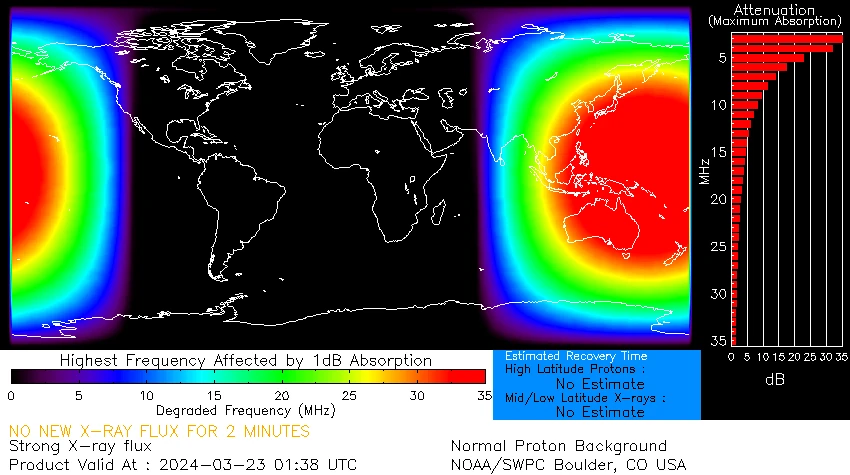

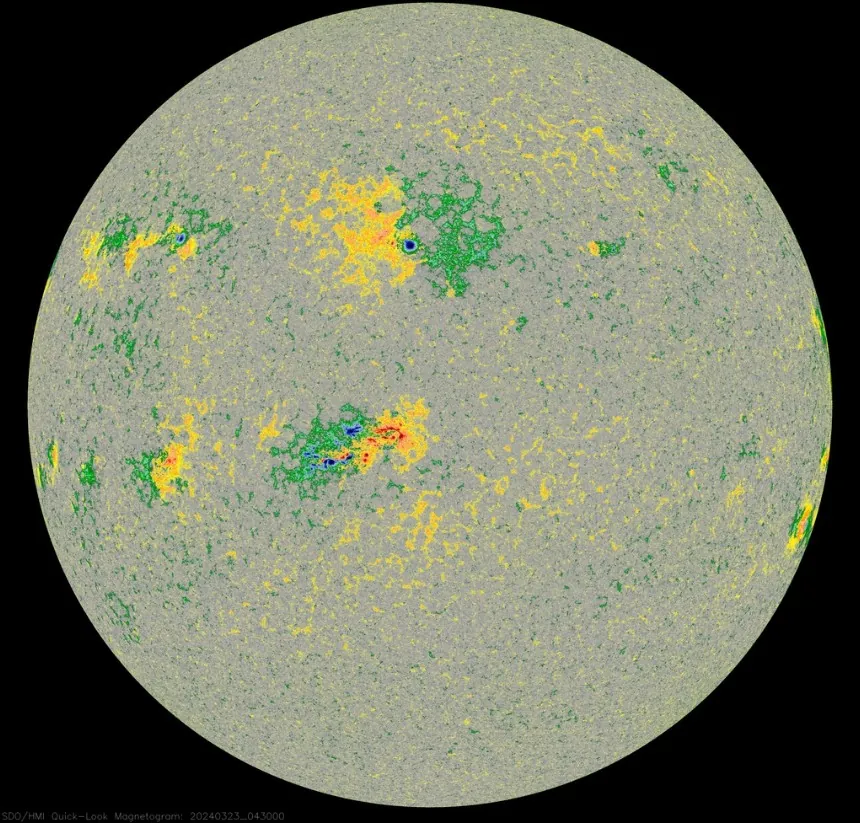

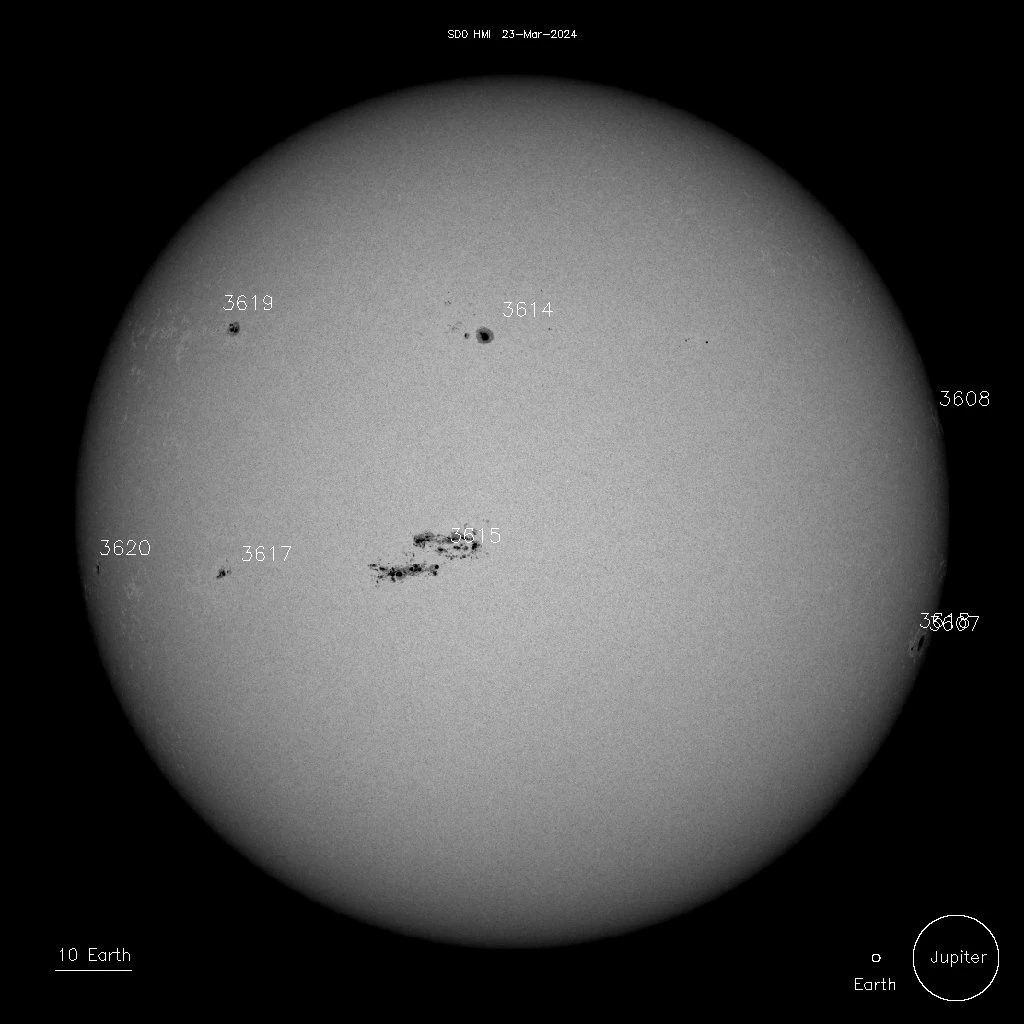

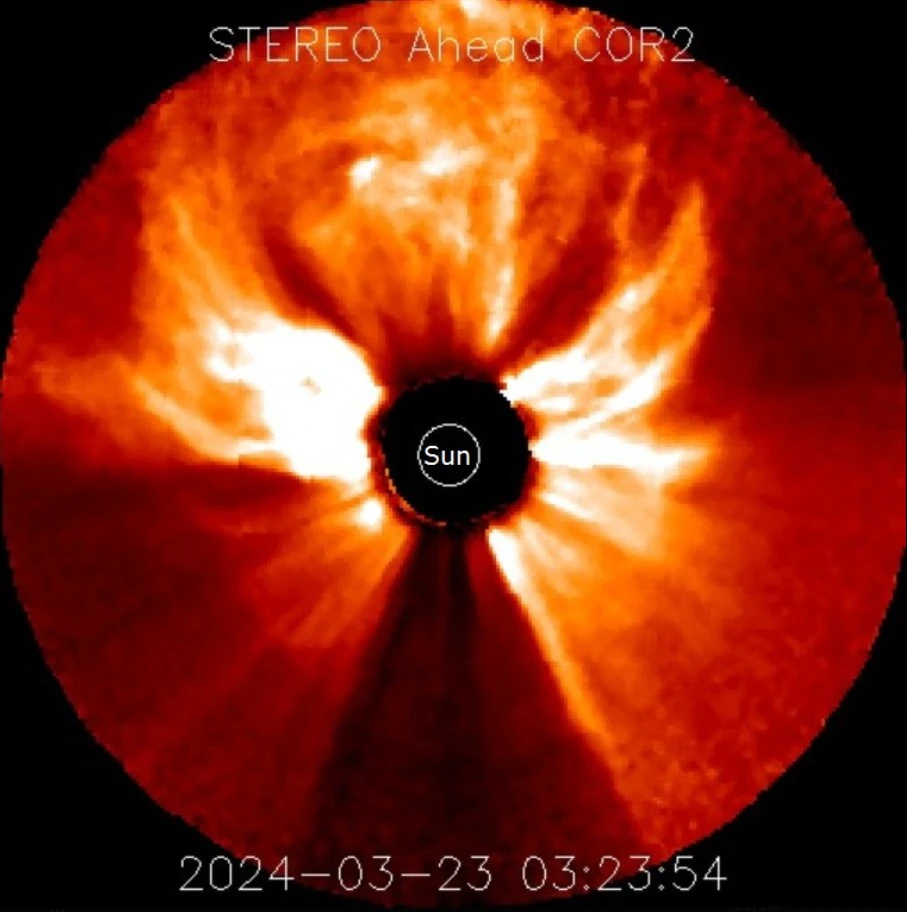

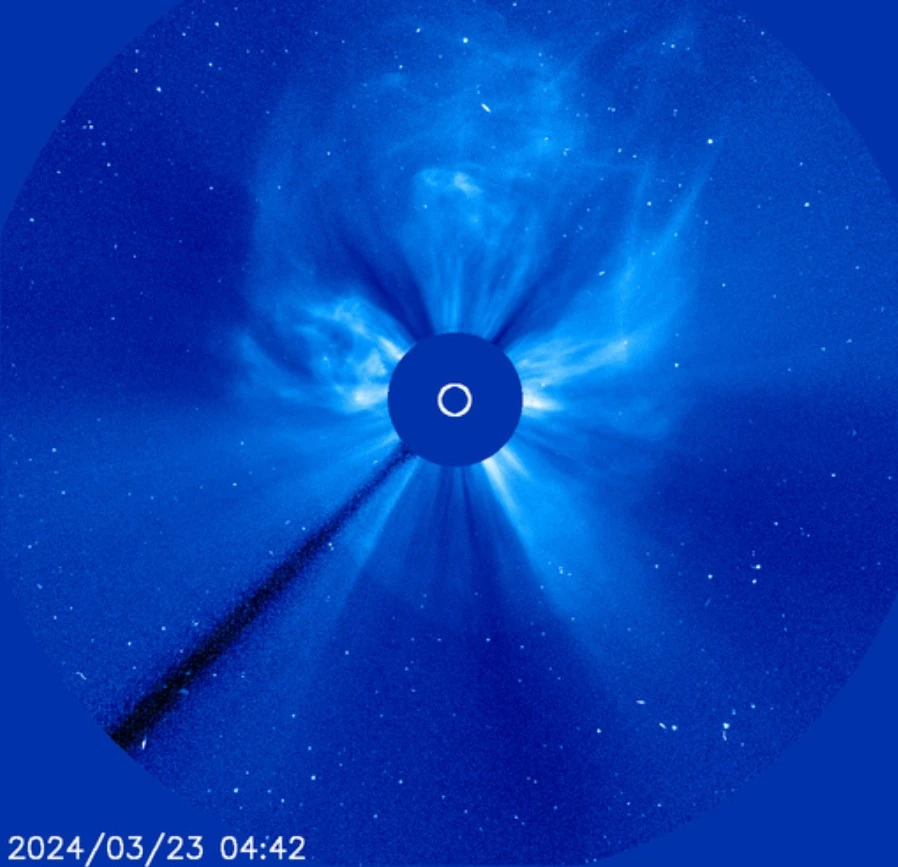

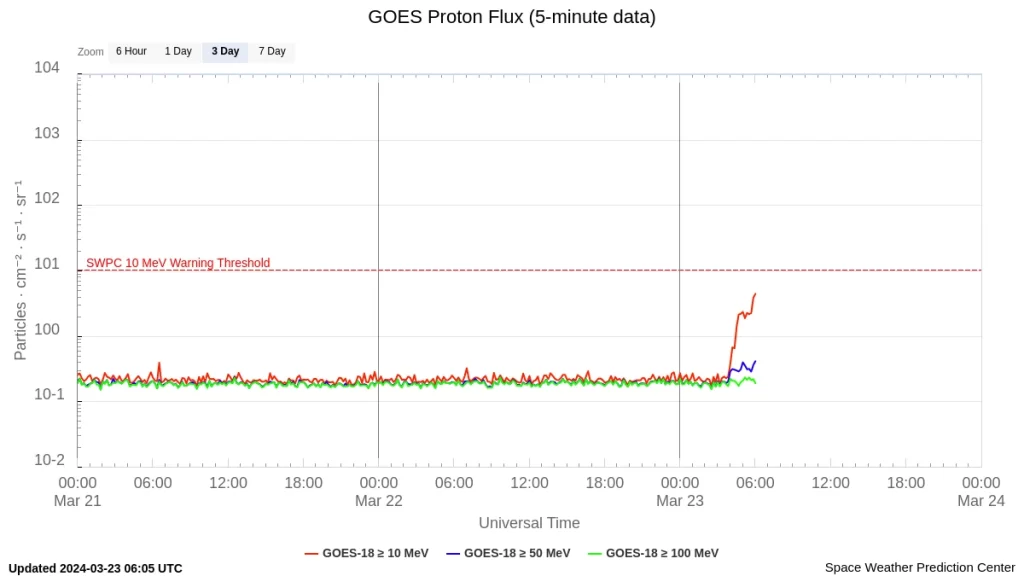

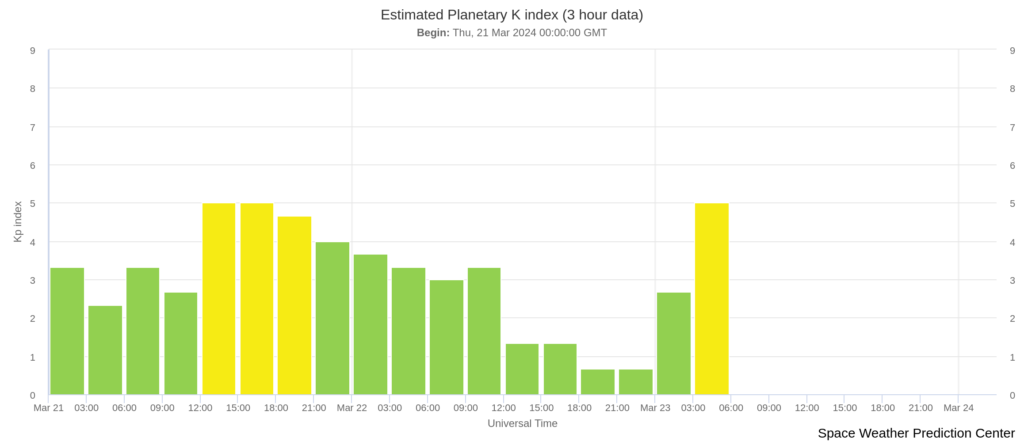

Updates
08:34 UTC, March 23
S1 – Minor solar radiation storm threshold was reached at 08:33 UTC. Minor impacts on polar HF (high frequency) radio propagation are expected, resulting in fades at lower frequencies.
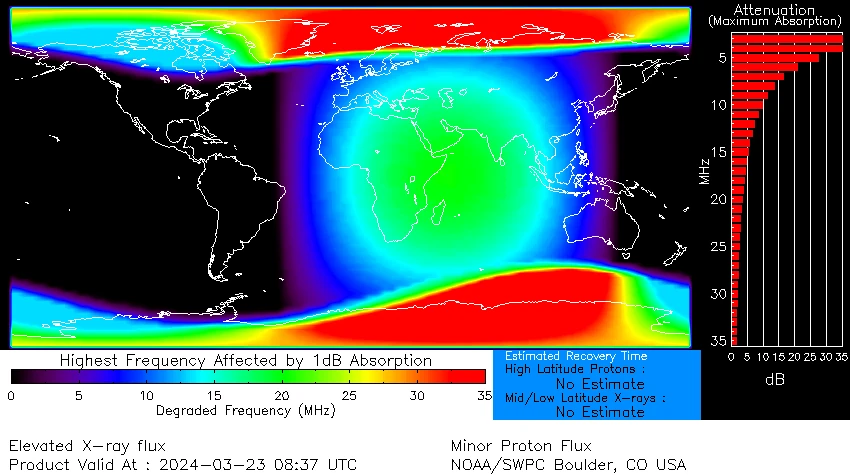

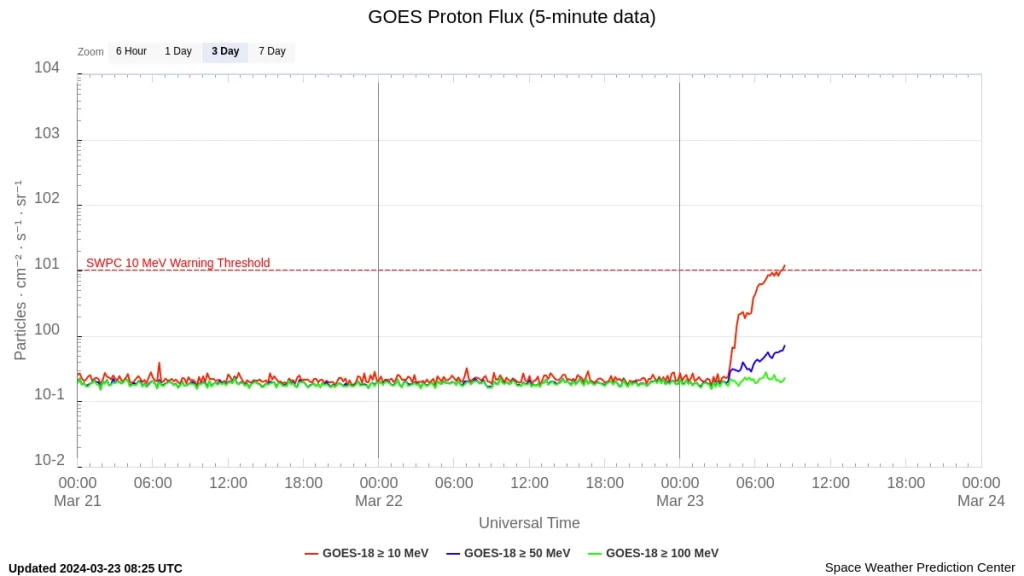

14:48 UTC, March 23
S2 – Moderate solar radiation storm threshold was reached at 14:05 UTC.
Potential impacts:
Radiation – Passengers and crew in high latitude, high altitude flights may experience small, increased radiation exposures.
Spacecraft – Infrequent single-event upsets to satellites are possible.
Radio – Small effects on polar HF (high frequency) propagation resulting in fades at lower frequencies.
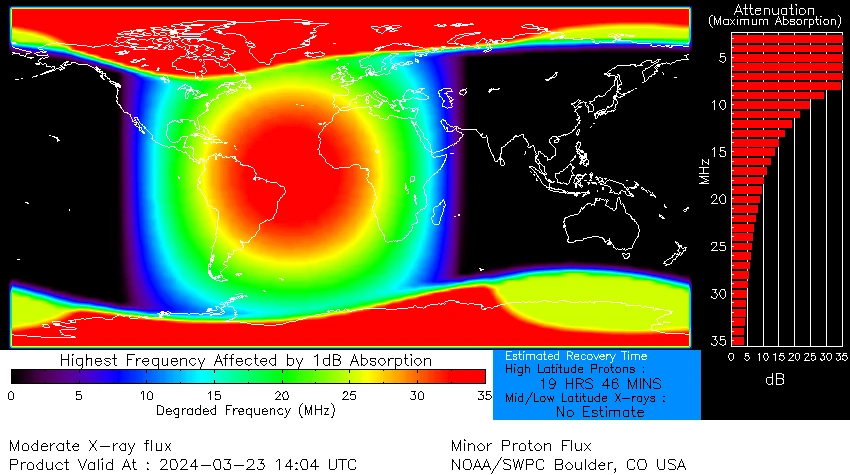

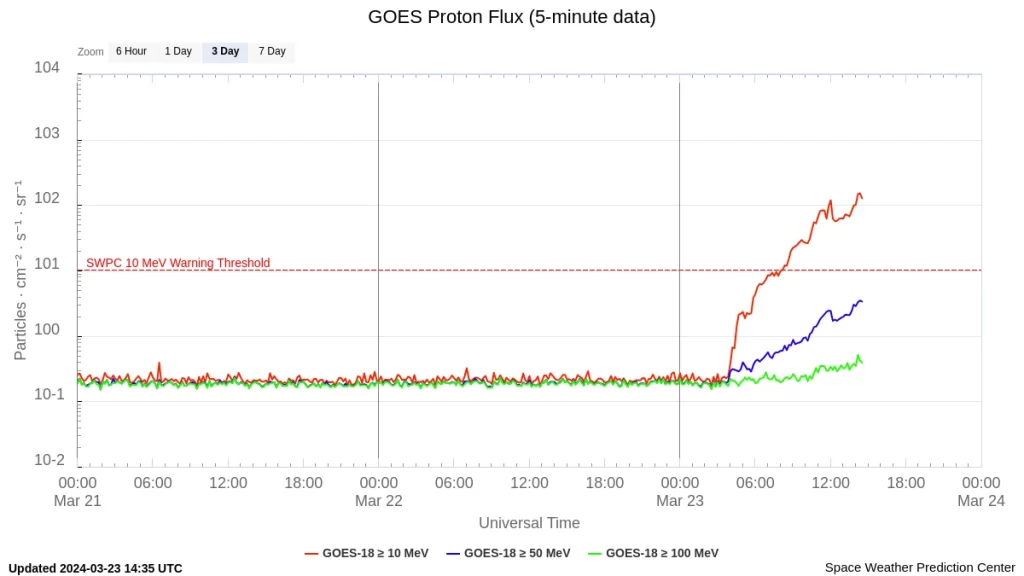

19:05 UTC, March 23
Initial model runs indicated a CME arrival late March 24 or early March 25.
A G3 – Strong geomagnetic storm is predicted for March 25:
Potential impacts: Area of impact is primarily poleward of 50 degrees Geomagnetic Latitude.
Induced Currents – Power system voltage irregularities possible, false alarms may be triggered on some protection devices.
Spacecraft – Systems may experience surface charging; increased drag on low Earth-orbit satellites and orientation problems may occur.
Navigation – Intermittent satellite navigation (GPS) problems, including loss-of-lock and increased range error may occur.
Radio – HF (high frequency) radio may be intermittent.
Aurora – Aurora may be seen as low as Pennsylvania to Iowa to Oregon.
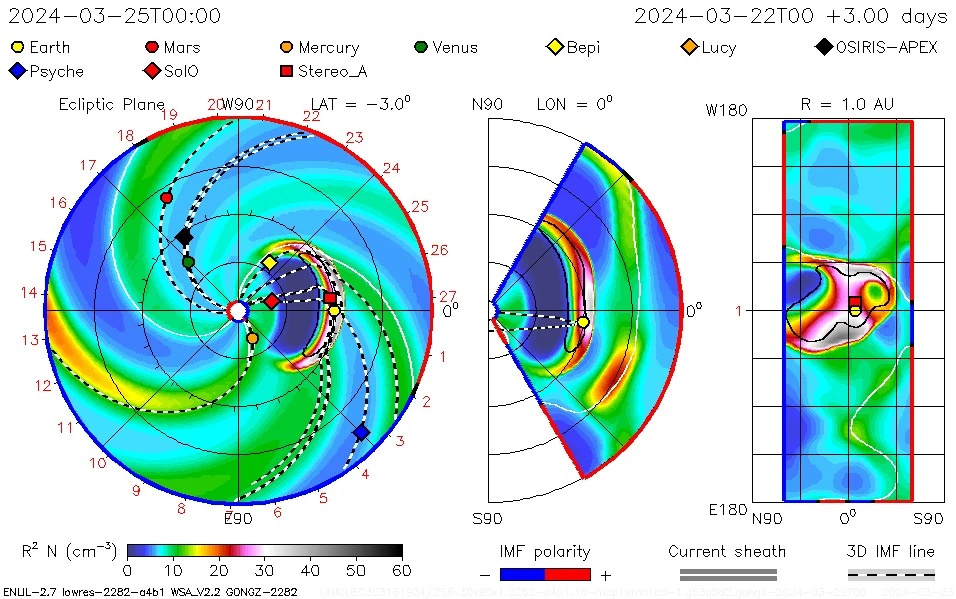

Solar radiation storm is still in progress:
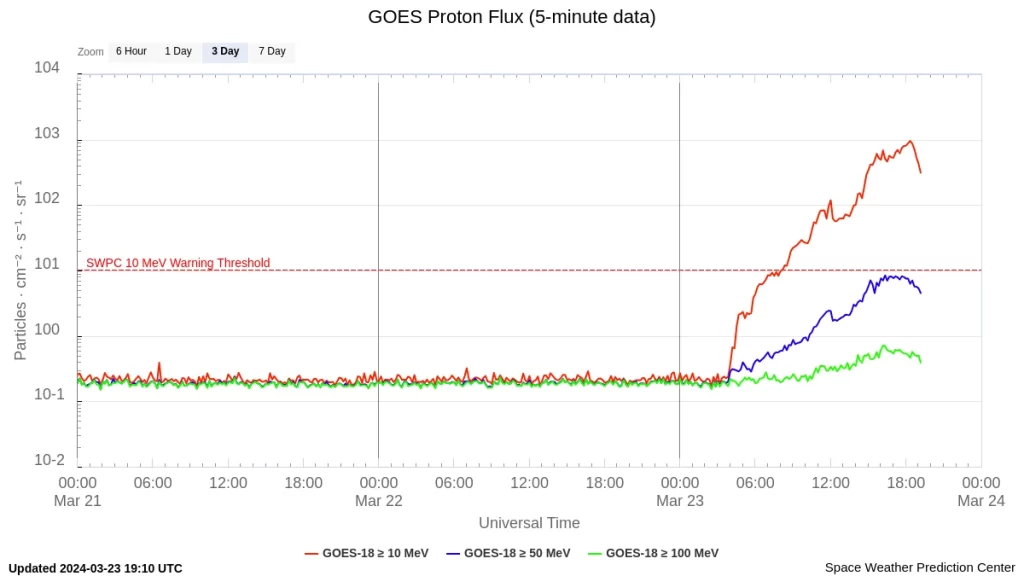

19:27 UTC, March 23
Following today’s X1.1 flare, our star produced 11 M-class flares to 19:30 UTC. The most active region was 3615 (beta-gamma-delta).
No other Earth-directed CMEs were observed in available coronagraph imagery.
| Classification | Date & Time (UTC) |
|---|---|
| M2.8 | 03/23, 16:51 |
| M3.7 | 03/23, 15:22 |
| M3.8 | 03/23, 15:13 |
| M1.5 | 03/23, 14:53 |
| M5.2 | 03/23, 13:52 |
| M1.9 | 03/23, 13:37 |
| M1.1 | 03/23, 13:11 |
| M1.3 | 03/23, 12:47 |
| M1.0 | 03/23, 11:29 |
| M3.1 | 03/23, 07:38 |
| M2.4 | 03/23, 07:09 |
| M1.1 | 03/23, 06:55 |
| X1.1 | 03/23, 01:33 |
17:29 UTC, March 24
The CME impacted Earth at 15:00 UTC.
G3 – Strong geomagnetic storm threshold was reached at 15:46 UTC and the storm further increased to G4 – Severe at 16:28 UTC.
G4 potential impacts: Area of impact primarily poleward of 45 degrees Geomagnetic Latitude.
- Induced currents – Possible widespread voltage control problems and some protective systems may mistakenly trip out key assets from the power grid. Induced pipeline currents intensify.
- Spacecraft – Systems may experience surface charging; increased drag on low earth orbit satellites, and tracking and orientation problems may occur.
- Navigation – Satellite navigation (GPS) degraded or inoperable for hours.
- Radio – HF (high frequency) radio propagation sporadic or blacked out.
- Aurora – Aurora may be seen as low as Alabama and northern California.
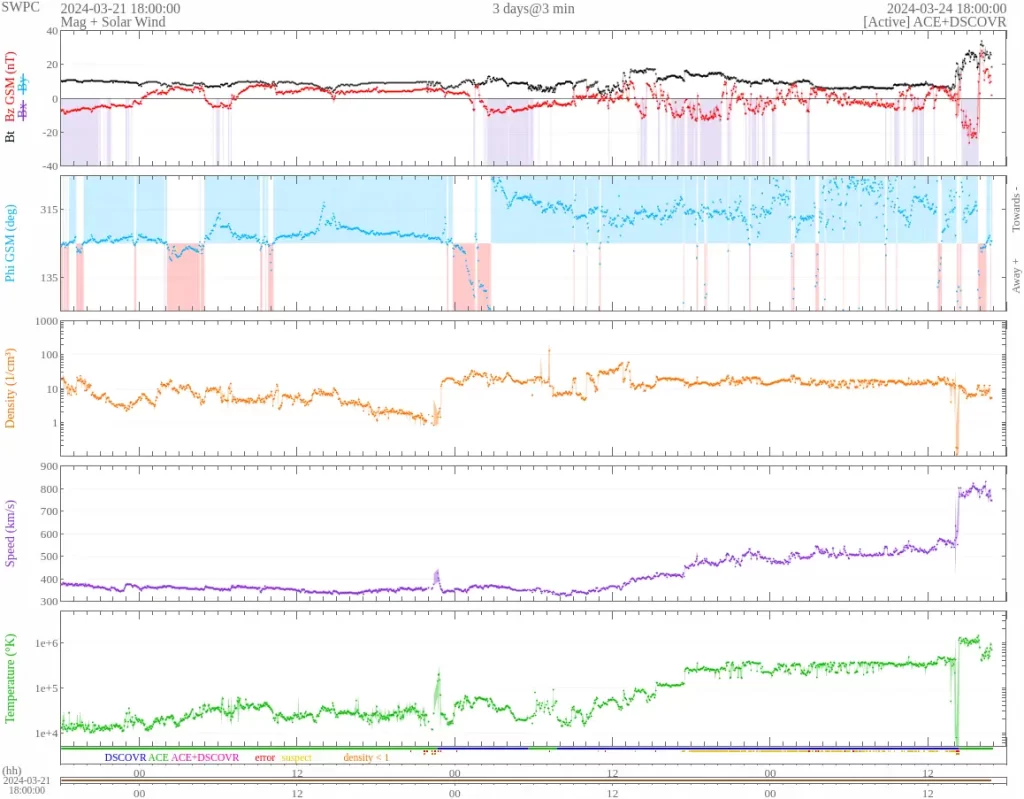

Featured image credit: NASA/STEREO Ahead COR2. Acquired at 03:23 UTC on March 23, 2024


Commenting rules and guidelines
We value the thoughts and opinions of our readers and welcome healthy discussions on our website. In order to maintain a respectful and positive community, we ask that all commenters follow these rules.